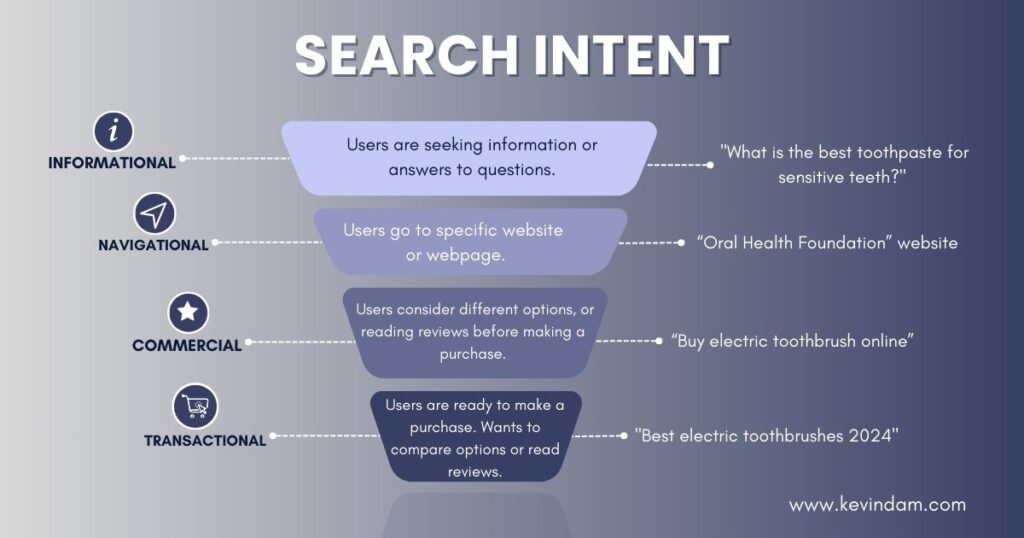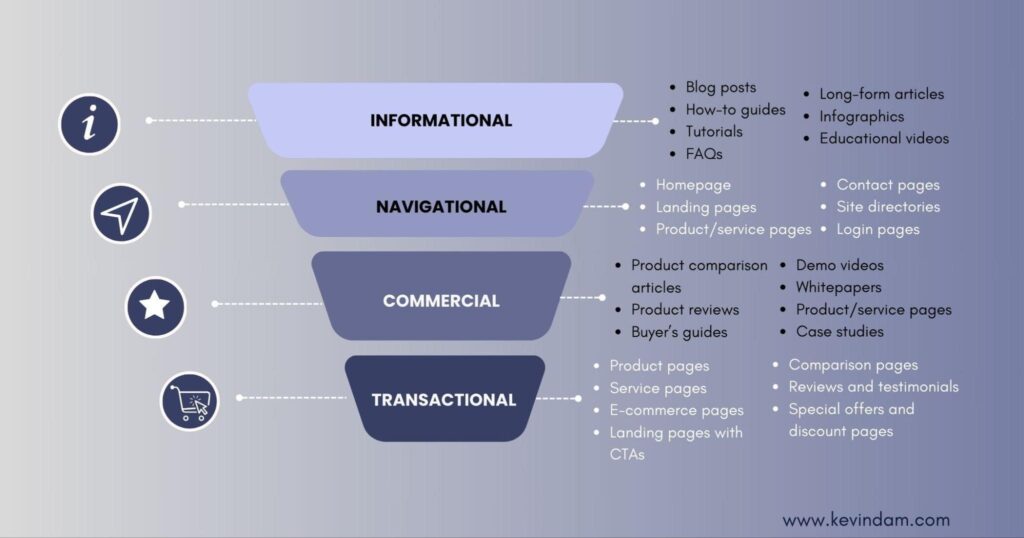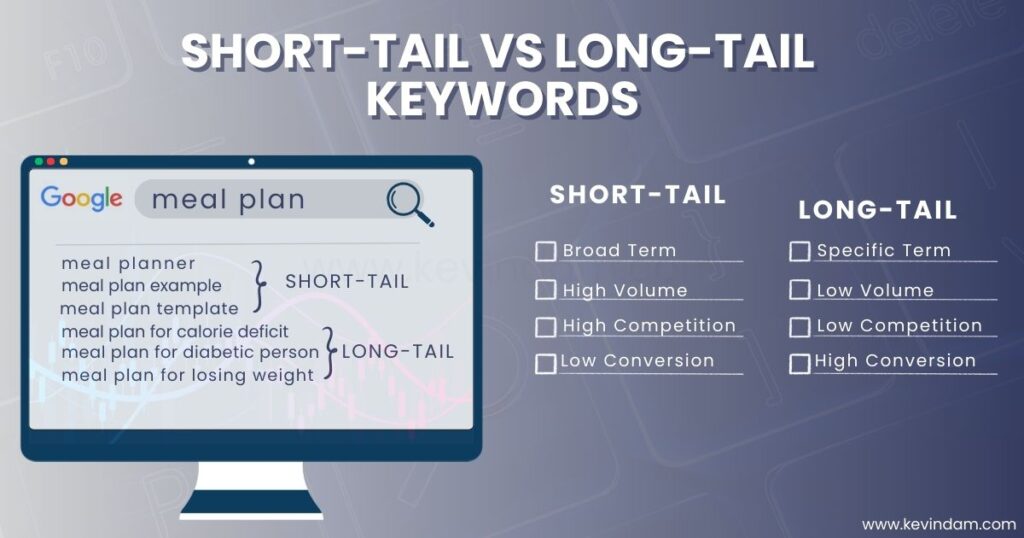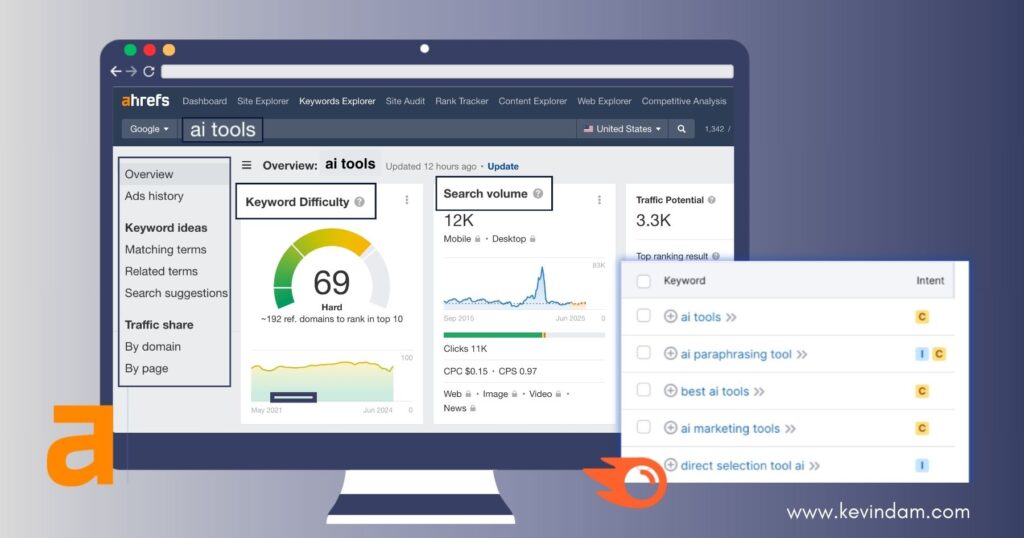
Last Updated August 14, 2024
Understanding Search Intent: A Guide to Content Optimisation
What if you could peek into the minds of your website visitors and understand exactly what they’re looking for? That’s the power of keyword search intent. This article will help you understand the meaning behind search queries and tailor your content to their specific needs. We’ll explore the various types of search intent, from those seeking pure information to users ready to make a purchase.
You will also learn different strategies to optimise and align your content with this intent to improve your website’s ranking in search engine results pages (SERPs) and transform it into a valuable resource that fosters trust and engagement with your visitors.
What is Search Intent?
Search intent refers to the user’s main goal when typing a query into a search engine. Understanding and optimising search intent is essential for ranking well in search results and satisfying user needs. You can increase engagement, conversions, and overall website traffic by aligning your content with user intent.
How do you understand Search Intent for SEO?
Understanding user search intent simply means figuring out what people want when they type something into a search engine.
This is important because if you’re trying to sell skateboards but you’re creating content that’s meant for people who want cooking tips, you won’t get very far.
It’s all about matching what you offer with what people are looking for.
Types of Search Intent

There are 4 main types of search intent:
- Informational intent
This is the most common type of search.
It’s when people are seeking information or answers to specific questions.
For example, if someone searches for “how to bake a cake,” they want instructions and details on how to do it. They aren’t looking to buy anything; they just want to learn something.
Informational queries normally need in-depth and informative content.
- Navigational intent
Navigational intent comes into play when users aim to land on a particular website or webpage.
In this context, think about someone searching for “YouTube”. They’re not looking for information about YouTube; they want to go directly to the site itself.
This type of search is similar to someone wanting quick directions to their favourite restaurant instead of looking at a map or finding reviews.
It’s focused on getting somewhere specific without any extra detours or distractions.
Navigational queries require clear and easy-to-find navigational links on your site.
- Transactional intent
Now, let’s talk about transactional intent. When a user has this kind of intent, they want to complete a specific transaction—making a purchase, signing up for a service, and so on.
Imagine someone searching for “buy Nike running shoes”—they have their wallets ready and are ready to make a direct purchase.
This type of search focuses on taking action and completing a specific task, such as buying.
Transactional queries need streamlined paths to making purchases or signing up for services.
- Commercial investigation
Last but not least, we have commercial investigation intent. This occurs when users are doing research on products or services before deciding what to buy.
Think about someone searching for “best gaming computers.” They’re not looking for just one computer; they’re comparing different options and trying to find out as much as they can about what’s available before making a decision.
Commercial investigation requires persuasive and informative content detailing your products’ or services’ benefits and value.
Understanding these distinct types of search intent helps us see things from the user’s perspective—it allows us to deliver content that meets their needs based on their intentions for searching.
Linking Intent to Web Content

Recognising the various search intents provides a roadmap for connecting users with the relevant content they seek. Let’s explore the strategic alignment of user intentions with web content.
When creating content for our websites, it’s essential to understand that successful content creation isn’t just about hitting high word counts or using the right keywords.
It’s about meeting the needs and desires of those who search for information online. Here are some steps we can follow to strategically align user intent with our web content.
The first step is to identify the primary purpose behind a user’s search query.
Are they looking for general information, comparing products, seeking local services, or ready to make a purchase? Once we pinpoint the user intent, we can tailor our content to better serve their needs.
For example, if someone is searching for “best budget laptops,” their intent is likely informational or commercial investigation. They want to gather information on affordable laptop options before making a purchasing decision.
In this case, creating a comprehensive guide or comparison of budget laptops would match their search intent perfectly.
On the other hand, if a user searches for “where to buy cheap laptops near me,” their intent is transactional or navigational.
They have a clear interest in finding a physical location to purchase a product quickly. Optimising web content to include local store addresses or e-commerce platforms would be the most effective for this type of search.
Understanding the user’s intent allows us to craft highly relevant and valuable content that addresses their specific needs at each stage of their online journey.
This level of personalisation builds trust and credibility with our audience, increasing the likelihood of conversion and customer retention.
Some may argue that optimising content for user intent requires additional effort and resources. However, the potential return on investment, in terms of enhanced user engagement, improved SEO performance, and higher conversion rates, makes it all worth it.
By linking user intent to web content effectively, we not only deliver valuable information to our audience but also position our websites for greater visibility and relevance in the digital landscape.
Strategies for Search Intent Optimisation
Here are some fundamental strategies to make sure your content aligns with what people are actually searching for:
1. Crafting Comprehensive Content
Imagine someone who wants to know how to bake a cake—they’ll want a detailed recipe that explains everything clearly, from the ingredients to the steps and tips for baking the perfect cake.
Content around their search query should be just as comprehensive—providing valuable information, answering specific questions, and addressing potential follow-up inquiries.
For example, if someone searches for “best exercises for abs,” they’re likely seeking a variety of exercises targeting different sections of their abdominal muscles, along with tips on how to perform them properly.
They’ll appreciate a comprehensive guide covering these points rather than a brief overview.
This type of content aims to be evergreen, meaning it stays relevant over time and remains valuable no matter when a user finds it.
2. Deploying Relevant Keywords

The next step involves using keywords that reflect the user’s intent.
Incorporating long-tail keywords is especially critical to capture specific search queries indicative of user intent.
Instead of just “exercise,” consider using “low-impact exercises for seniors” or “bodyweight exercises for beginners.” These longer, more detailed phrases give search engines more context about the user’s intentions.
One key benefit of deploying relevant keywords is attracting highly qualified traffic to your site by providing solutions that closely match what users are specifically looking for.
1. User-Focused Content Organisation
How you organise your content also plays a crucial role in satisfying user intent. Using user-friendly formats like bulleted lists, tables, or step-by-step guides ensures it’s easy to navigate and addresses various levels of intent within a single page.
Picture someone wanting to compare different smartphone models. They’d prefer seeing a table highlighting key features like battery life, camera quality, and processing power. By structuring the content accordingly, you’re directly addressing the intent behind their search query and providing a user-friendly experience.
By catering to multiple levels of intent within one piece of content, you increase its appeal and effectiveness in matching diverse user needs.
Understanding these strategies forms the bedrock of optimising search intent. Implementing them effectively can significantly enhance your website’s relevance and visibility to users whose needs align with your content.
How to Conduct Intent-Focused Keyword Research

When it comes to keyword research, it’s not solely about finding the most popular words—it’s about discovering the ones that authentically mirror what people are seeking. This means understanding the intent behind those searches.
To do this effectively, it’s essential to use tools that can help decipher user intent based on keyword searches.
Keyword Research and Search Intent Grouping Tools
There are several tools you can use to find more keywords. There are also other tools that are used to group your list of keywords based on the intent:
Keyword Research:
Here are some tools we normally use in doing keyword research:
- Google Keyword Planner
- SEMrush
- Ahrefs
- People Also Ask
- Related Searches in Google SERP itself
Keyword Grouping Tools:
- Keyword Cupid
- Keyword Insights
- Key Clusters
- ChatGPT
- Gemini
Most of these tools are paid tools, but with Google tools, they are normally free to use. We also include ChatGPT and Gemini because they can also be helpful in grouping your keywords.
Data Analytics of User Search Intent
Analysing Search intent does not only happen during the start of content creation and stops after publishing the content online. Search intent analysis is a continuous process. Even after you rank your content in the top 10 of the search results, you still need to review what’s happening in your content.
Check if the rankings change occasionally because Google may change and see a different intent for the keywords as it gathers data based on the searcher’s actions. You can use tools like Google Analytics and Google Search Console that provide valuable data, allowing us to analyse user behaviour and search patterns.
By mining through this data, you gain invaluable insights into the intent behind users’ queries, empowering you to optimise our content to better align with their needs and ultimately improve user engagement.
Google Analytics. Google Analytics grants information concerning how users interact with your website. From the pages they visit to their time on each page, we can discern which content resonates most strongly with our audience. This granular level of insight allows us to tailor our content to meet and exceed user expectations, thus boosting engagement and retention.
Google Search Console. Provides detailed reports on how our website appears in search results. We can identify the keywords and phrases that lead users to our site, clearly indicating their search intent.
By analysing user behaviour within Google Search Console, you can determine which search queries lead users to click through to your site. This helps you identify areas where your content excels at meeting user intent and areas where improvements could be made.
You must continually monitor and analyse this data to refine your SEO strategies. These insightful tools will help you stay ahead of the curve and continuously tailor your content to match the exact needs of searchers—thus enhancing user experience, improving rankings, and driving more organic traffic to our website.
Conclusion
Understanding search intent is fundamental for creating content that meets your audience’s needs and enhances your website’s SEO performance. By aligning your content with the four main types of search intent—informational, navigational, transactional, and commercial investigation—you can improve user engagement, satisfaction, and conversion rates. Remember to continually analyse user data to adapt and refine your strategies. Start optimising your content today to ensure it resonates with your audience and ranks well in search results.
